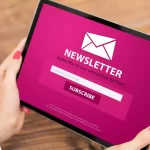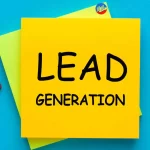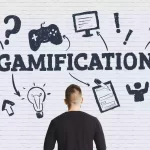Are you tired of sending emails that get lost in your inbox? And wishes to know how to write an email that stands out and gets read. It might be challenging to ensure that your email stands out in the sea of emails.
We get hundreds of advertising emails practically every day. We swiftly inspect them with our eyes and get rid of the inappropriate ones.
But what about the selected few? How did they manage to retain our interest and bring us down the steep slope to their site?
Today we will teach you how to enter into this “exclusive” group, how to design an email that sells and what to write so that your subscribers don’t become bored.
We took a deeper look at Statista’s study in 2021, which indicated that the average time a person spends “reading” an email is 10 seconds. But we can barely call it reading, given it only genuinely reads 9% of the overall material. People skim just a tiny percentage of your correspondence.
What does this imply for us?
You’ll probably breeze through this blog article too, so let’s get on to the good part. In order for your prospective consumer to approach your golden gate, it is vital to follow these few steps:
1. The shorter, the better.
“Keep it brief and get to the point.” In general, shorter marketing messages are more successful. No one wants you to read long articles.
Use brief text blocks, preferably 3-6 lines. Ideally, you should be in the region of 100-200 words, with the fact that you may link to your blog or directly to your product website for extra information.
2. Scan-friendly newsletter
Generally, if your recipient opens the email, they will skim it within the first few seconds to determine whether it is worth reading at all. Therefore, break the material into paragraphs, use headers, and add photos, but everything is in moderation. At first look, your newsletter should be simple to read so that it displays precisely what you are attempting to say.
3. Focus on the message
If possible, avoid discussing numerous subjects at once. Focus on what’s essential. Most readers skip extended salutations and introductions. Thus, some individuals don’t even use introductions. But if you do, please offer a concise summary of the information included in your email.
4. Use less “we” and more “you.”
Rather than discussing you and your company, put the emphasis of your message on your receiver. What will it provide them? What can you give them? What will they gain out of it?
Don’t make the reader ponder too much. Try to make your email clear and intelligible. Include examples or outcomes in the email to illustrate your items’ fantastic and how customers may utilize them in practice.
5. Write a subject line and a preheader that sells!
To open or not to open, that’s what it’s all about. We have dealt with the subject of preheader (header) innumerable times in our works, and today will be no different.
They decide whether the recipient opens your email or deletes it directly away. Why is it so? This is the first piece of information that your recipients will see and will generate an effect on them.
If we were to appreciate this issue better, we might use an example from the hotel company. Imagine you are going on vacation. You’ve paid for a lovely hotel, and you’re looking forward to finally relaxing.
However, upon your arrival, you are not received with a warm welcome by the receptionist – he is not having the nicest day, and due to his lousy attitude, he does not treat you as you would imagine.
The receptionist is the first person you come into contact with at the hotel and influences your impression of your vacation will be.
Now, because of her horrible attitude, you don’t have a pleasant image of your stay, even though the hotel is not at fault in other situations. It works similarly in email marketing.
In our scenario, the subject is tied to the function of the receptionist, as mentioned earlier. If it is not intriguing, it will be put into the rubbish. So be unusual, funny and a little mysterious.
Highlight the content of the email itself. Don’t make stuff up, and especially don’t lie. If you want to escape hell – i.e. your email ending up in SPAM – avoid terms like a discount, loan, money, free and the like. They will not bring you anything wonderful.
You may read our guide on: How to prevent your email from going to SPAM.
6. Sell email with words. Come up with a catchy headline!
Come up with words that will feed your recipients’ eyes and keep them intrigued with your email. Let’s forget about politeness and a simple greeting like Dear Sir / Dear Madam.
You are not sending a letter from the bank but an email from which you wish to earn part of that crown back. You must know that you have little time to engage your audience. Unfortunately, the simple fact that you got them to open the email doesn’t imply much. The game continues.
The subject line should be original and enticing and display the email message’s substance.
Let’s visualize an example of a newsletter (electronic newsletter) from the business ALP ecology. Not only does it contain an acceptable email subject, but it is also swiftly followed by the introduction of the message itself. From the very beginning, the writing is lively, inventive and engaging. Simple and beautiful images accentuate the overall impact.
7. How about content in the email body?
Offer what you have under your sleeve. But don’t forget the rule that there is beauty in simplicity.
Email should not be like a multi-page flyer that appears in your email virtually every day. Offer the finest you presently have in stock.
Do not try to integrate emails in a complex way. Know that if you are interested, the customer will be glad to head over to your website and buy anything, even if the particular product is not stated directly in the email.
The design and layout of your newsletter can also be extremely enticing. So don’t be hesitant to spend a little additional time on the aesthetic of your newsletter.
Come up with a beautiful banner that also represents the purpose of your message.
8. How to personalize in email?
We say it all the time. The more information you know about your customers, the better for you. The more you know, the better your mailing will be.
The fact that your customer sees his name in the letter or some other added information that links specifically to him will ensure curiosity. As an example, we may give an email that will concern your regular, returning customers, where the aim is to thank them for their loyalty.
For example: “You are great, Jana! You have already bought from us for the tenth time, and we applaud you for the trust you have shown. As a gift, you get free shipping on your next purchase.”
9. Be funny!
Can you sell your lyrics? So don’t worry about it. Even plain text sales emails may impress. If you can play with words, go for it!
10. The call to action must not be disregarded!
We have built the mailing, but we are still needing something… What is it? Buttons that promise rapid action! It would be ridiculous to provide things and at the same time not have any relationship with them.
What do you think? Ease the road for your consumers and guide them! Your efforts will be squandered if your email lacks a call to action.
The most common mistakes when creating a newsletter
1. Underrated visuals
You put in the work, acquired a lot of good information, and forgot about the visuals. People react to pictures more than words.
You overestimated that they gave you 3 seconds of their time, and you put it in the garbage. In this situation, spam.
Unattractive aesthetics might turn people off regardless of great content. Modern programs for sending emails also feature innovative and inventive templates in their menu, which you need to complete with text, graphics or photographs.
2. Structure of the text
In emails, the same errors are made again. With your emails, wow your consumers and outperform the competition!
What mistakes are often repeated in emails?
• Too technical text and incorrect grammar
• Clumsy structure and too much text
• Mixing multiple targets within a newsletter or email campaign
• Too many repeated calls to action or missing calls to action
• Too long content without graphics or too short content without a point
• Failure to load images or graphics
• An incomprehensible, discouraging or warning email subject
3. You overlook the audience
Audience segmentation is the key to improved newsletter reading. If you know your consumer, target them. If you have numerous groups of subscribers, it’s time to arrange them and communicate with them according to your aim.
The distinction is evident even if you operate in a B2B firm and different if you target a B2C end customer. You modify the manner of communication and the so-called tone of voice to this.
4. When you don’t know customers’ behaviours
The major cause for unsubscribing from the newsletter is too frequent emails. The number and timeliness of emails are significantly underestimated.
If you send them too frequently, it is hazardous. If you send them at the incorrect moment, you won’t catch clients being active. Your efforts are after that futile again. The other extreme is sending newsletters too seldom. Customers will forget about you.
5. You are sending advertisements without permission
Attention! Do not send unsolicited emails. This poor technique might ruin your reputation or generate bad evaluations from angry clients.
If you neglect this vital issue, you risk difficulties. Uninvited advertising may even have legal ramifications. GDPR is no joke at all. GDPR demands companies acquire affirmative permission that is freely provided, precise, informed and clear.
Read more about: Email marketing law
6. You are sending clients away with content
Customers feel duped if you promise them news about the firm or possibly reviews, and instead, send them business pitches. They also don’t perform well if you don’t supply them with any extra value.
Think of the newsletter as an inverted pyramid, highlighting the finest items, deals or special events at the top. In this manner, you will be sure that people will notice them and not miss them again.
7. You don’t test emails
If you don’t test your emails, you’ll never discover how to enhance them. You may discover that your readers have radically different expectations from your newsletter.
Ask them for comments. What would they appreciate? A satisfaction questionnaire or a survey on social networks might also aid you.
An excellent technique is A/B testing. A/B testing is a simple approach to test various components of your email and determine what your audience likes.
Also, be cautious about how the email is presented. This, too, may be evaluated before submitting it. Each email client might show the newsletter differently. So run a simple test and send your email to multiple devices and different email clients.
8. You don’t track email deliverability and email campaign outcomes
The final error marketers make when building and delivering newsletters is not checking the deliverability of their emails.
On the other hand, you should concentrate on whether your emails are being sent appropriately or ending up in the spam or other folders. Subsequently, repairs must be made and mistakes deleted.
If they are provided effectively, consumers read them, but the impact does not occur, and their efficacy has to be analyzed.
Reviewing after each campaign will give you invaluable insight into what kind of content your audience is responding to.
Monitoring and evaluating email campaigns is key to your newsletter’s success, but this aspect is very often neglected or completely omitted.
Our final advice – specify the goals of the expectations, and you will achieve better results.
Running out of inspiration and don’t know what to write about?
Do you believe you have exhausted all the themes that might be utilized concerning your products? Perhaps one of our recommendations will come across as an excellent idea for your company.
There is a lot of inspiration. You can start with easy hints and diverse guidance on how to utilize your items. Newsletters such as tips and techniques, top 10 list or “how to do” cannot be neglected.
Sending periodic discount vouchers for your items is surely not out of the question either. It’s a good idea to list any future events in which your firm may participate.
Promote your blog at the same time. You may write a brief synopsis and link to it if you have one. The narrative of your organization is surely an excellent topic for a newsletter.
You may conduct a contest, connect it to social media and make it a wider campaign. Are you planning a new collection? Draw attention to it in time with a smaller preview.
Now you know, at least in the beginning, what to write an email about and, above all, so that your reader will sit with it for at least a bit. So don’t hesitate and go for it!
Conclusion
Offer your consumers a means to reach you. Adding a link to your social networks and website won’t damage anything.
I hope you liked the post and found it useful in producing your next mailing. Do not be reluctant to contact us at any time if you have any queries!





